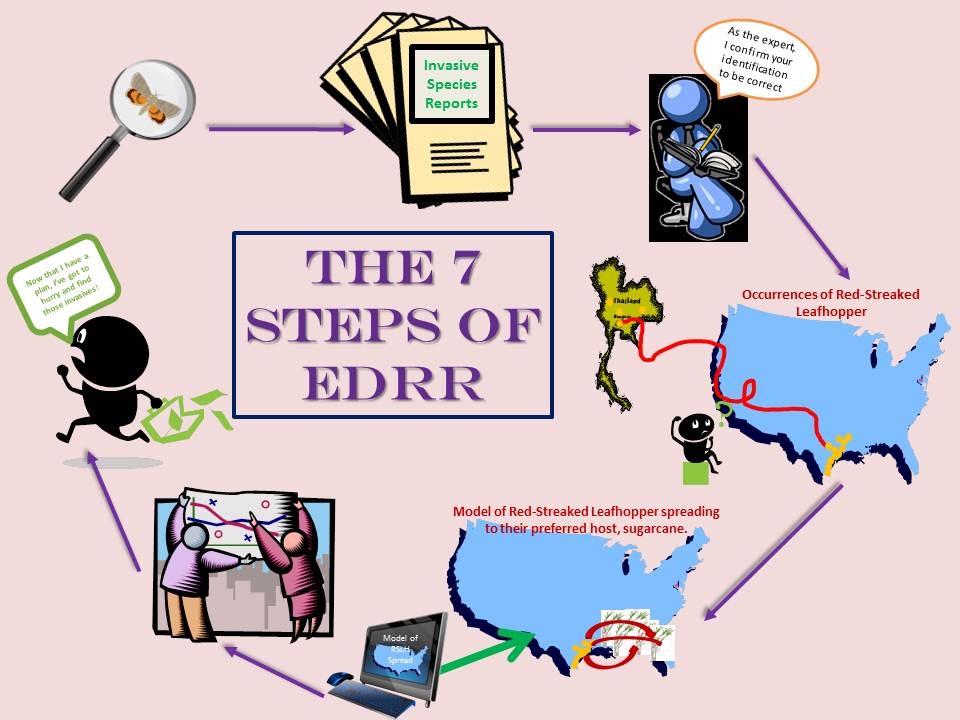Early Detection Rapid Response (EDRR)
Early detection is crucial in protecting native plants and animals from severe damage caused by invasive species. The longer it takes to respond to an invasive species, the more money and time must be spent restoring and protecting the ecosystem. Severe economic effects can be prevented by alerting local growers of an invasive species and how to manage it without profit loss. If management techniques can be developed rapidly, the response is much more effective. There are 7 steps to making the Early Detection, Rapid Response method successful. Click on each of the following steps for a definition/summary, and methodology.

- Identification
- Reporting
- Expert Verification
- Review Occurrences
- Rapid Assessment
- Establish a Plan
- Rapid Response
Selected Literature (select to view and/or print):
- Beyond Control: Wider implications for the management of biological invasions
- Biosecurity: moving toward a comprehensive approach
- Eradication - Preventing invasions at the outset
- ESA Report - Biological invasions: Recommendations for U.S. Policy and Management
- How much information on Population Biology is needed to manage introduced species?
- New Approaches for Early Detection and Rapid Response to Invasive Plants in the United States
- Optimal detection and control strategies for invasive species management
- Risk analysis for Biological Hazards: What we need to know about Invasive Species
- Show me the numbers: what data currently exist for non-native species in the USA?

 Texas Invasive Species Institute
Texas Invasive Species Institute